Ten Things You Should Know About Ukraine (and How They Might Effect the Current Demonstrations There)
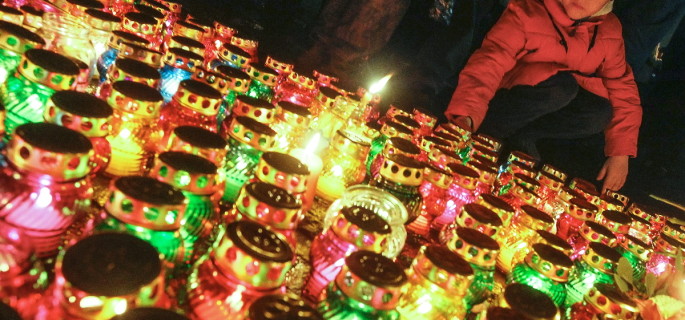
Munich — A recent look at the official statistics at Munich’s Kreisverwaltungsreferat (county authorities) showed that officially more Ukrainians live in Munich than either Brits or Americans. An estimated 12,000 Ukrainians live in or near Munich. In light of that and the recent uprisings in Ukraine, we thought it might be a good idea to look in-depth at these eastern European immigrants, and to show the connection between Ukraine and Germany, and especially the connection to Munich.
Here are 10 things you should know about Ukraine which might help explain the recent demonstrations there. These factoids were culled from either Paul Robert Magocsi’s ‘A History of Ukraine’ or Orest Subtelny’s ‘Ukraine: A History’. Ukrainian schools often used a translated version of Subtelny (from English to Ukrainian) to teach pupils Ukrainian history. These two giants are considered by many scholars to be the two best sources for Eastern European studies in English.
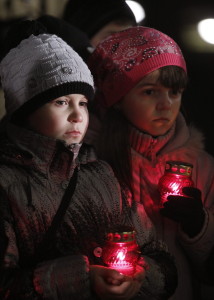
Ukrainian children hold candles during a memorial ceremony near of a monument to the victims of the Great Famine in Kiev.
Reports state that Ukrainians light candles to mark a day of memory for the victims of the Holodomor in 1932-1933. The Holodomor was a manmade famine provoked by Soviet dictator Josef Stalin. The result was the death to more than five million Ukrainians. EPA/SERGEY DOLZHENKO
- Shortly before the Mongols sacked Kyiv in 1240, it had 35,000-40,000 inhabitants. London reached that number approximately a century later.
- After the Mongols were vanquished, Ukraine was controlled by either the Polish/Lithuanian Commonwealth, the Tartars of the Ottoman Empire, the tsars of Russia and eventually the Soviet Union. Except for a brief few months in 1918, Ukraine was never an independent country after 1240 until the implosion of the Soviet Union in 1991.
- From 1848-1917, western Ukraine was under the control of the Habsburgs. The Habsburgs gave western Ukraine near autonomy. The eastern part was led by the tsar in Moscow, who considered Ukraine to be nothing more than a vassal state.
- In 1919, six foreign armies were operating on Ukrainian soil. These included the French, the Romanians, the Hungarians, the Russians (Red and White), and the Poles. Three Ukrainian armies joined the fray: Red, White and Anarchist. Kyiv changed hands fivetimes in 1919. Between the two world wars, Hungary and Czechoslovakia also found reason to have armies in Ukraine too.
- Kyiv is known as the city of 300 churches. Before the Soviets conquered it Kyiv was known as the city of 3,000 churches.
- The most important Ukrainian ever was Taras Shevchenko. He basically standardized and created the modern Ukrainian language. Statues of him can be seen all over Ukraine.
- The Holodomor of 1933, or ‘Death by Hunger’, caused the deaths of 4.5-5 million Ukrainians directly. Another 10 million died in the 1930s as a result. Stalin wanted the grain of Ukraine to feed his factory workers in the cities, and was only too pleased to decimate Ukraine, the only country with a population (and mentality) to cause problems internally for the Soviet Union. The Soviet Union denied it ever happened, but it is recognized as genocide by the United States and many members of the European Union, Stalin being the perpetrator.
- The Soviet Union wasn’t able to completely pacify western Ukraine until the 1950s. The Carpathian Mountains were a trouble spot for many years after WWII.
- From 1657-1686 another ‘Thirty Years War’ but with a different name was fought in Ukraine between Poland, Russia, the Turks and the Cossacks. Cossacks’ leader Bohdan Khmelnytsky threw his countrymen’s lot in with Russia, forever aligning Ukraine with Russia and not Poland. Poland and Russia would continue to try and pull Ukraine into their respective spheres of influence.
- Leonid Brezhnev and Leon Trotsky were born on Ukrainian soil, and Nikita Khrushchev moved there when he was 14.
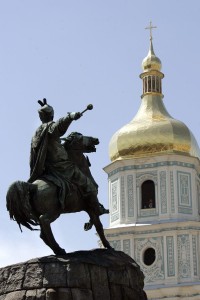
The monument in the centre of St. Sophia Square is an equestrian statue of Cossack leader Bohdan Khmelnytsky (1595-1657) and on the background the bell-tower of St Sophia Cathedral in Kiev. -photo: dpa
A brief look at the history of present-day Ukraine shows the tremendous amount of difficulties this country has had, and continues to have, to assert its rights as an independent state. Though many of the difficulties can be traced back to the behemothian neighbor Russia, it runs much deeper than that. Western Ukraine has enjoyed a bit more independence that eastern Ukraine, and this is one of the main factors as to why it has been in the lead when it comes to the demonstrations across the country.
We here at MunichNOW will report events on the ground in Ukraine and attempt to show the connection between Ukraine and Munich, with help from a correspondent on the ground near Kolomyya, in the Ivano-Frankivsk Oblast.
+++++++++++++++++++++++++++++++++++++++++++++++++++++++++++++++++++++++++++++++++++
Michael V Owens, married to a Ukrainian, lived in Ukraine for a year, and is the son of a Ukrainian. He was a professor of American Literature and History, and gave numerous lectures on world economics, law, and government, at Kyiv International University. He has regular contact with Kyivians and Ukrainians, and travels once or twice a year to Ukraine.





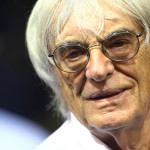
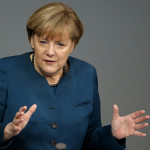
 Euro Converter
Euro Converter